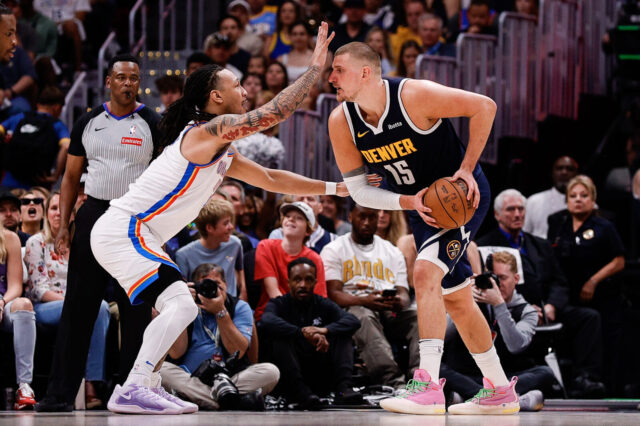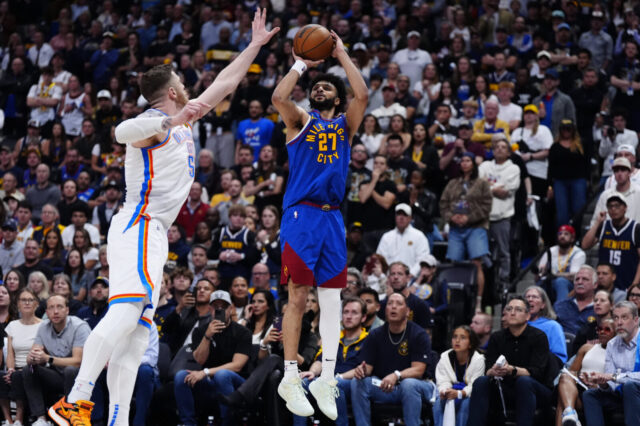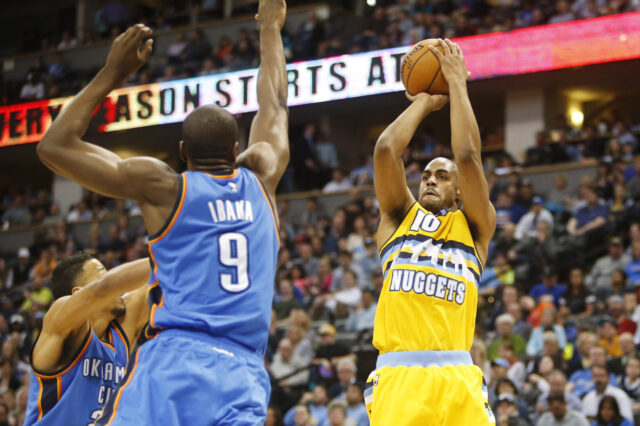The pick and roll is the cornerstone of the modern NBA, and even though it's relatively simple in theory (one guy without the ball, screens the guy with the ball), there are dozens of subtle things an offense can do in P&Rs that create all different types of possessions. One of the things that a team can do is set up the P&R by first setting a screen for the screener.
 Must Reads
Must Reads 
This action is not to be confused with a "screen the screener" action, or STS. In an STS, a player sets a screen, then receives a screen. Actions like ram screens are opposite, in that they are designed for a player to receive a screen first, and then set a P&R second. The point of this type of action is to make it very difficult for the player defending the screener in a pick and roll to anticipate and defend the ball screen. By screening the ball screener, the pick and roll defender has to fight through a screen before hedging or containing a ball handler or shooter.
Many of Mike Malone’s half court sets in Sacramento utilized this type of action. In the first example, the Kings run a “Ram” screen into a pick and roll. This series typically begins with a wing player at the elbow who sets a down screen for a big. Team’s like to screen small for big here, so that the defense can’t switch the screen. The big will receive the screen on the block and then sprint up to the ball handler at the top of the key for the screen and roll. In the clips below, Malone and the Kings do a great job of spacing the court with players in the corners and then running the “Ram” action to get the point guard attacking the paint.
This action works especially well, when you have a point guard that can attack the paint “downhill” and Emmanuel Mudiay is just the type of guard that should excel in these situations. The set requires a certain level of fearlessness and determination to attack the paint and those are two things that Mudiay will likely be very comfortable doing right from the start. Jusuf Nurkic is a huge body and a decent screener and should see some reps this season as the screener in this situation. Darrell Arthur is another player that will likely see reps as the screen guy (if he returns to the team in free agency).
The Nuggets roster doesn’t have a lot of perimeter shooting at the moment, but in the example below, the Kings were successful placing DeMarcus Cousins as the floor spacer in the corner. With great weak side action and proper timing on a dive to the basket, DeAndre Jordan is forced to guard both Isaiah Thomas and Cousins – and the play results in a Cousins dunk. The Nuggets will likely use Kenneth Faried in this spot on occasion, and it’ll be very interesting to see if Nikola Jokic can knock down that corner three with any consistency. Jokic has the size to be a stretch 4 or 5, and if his defender is forced to stay close, the lane will be wide open for Mudiay to create scoring opportunities for himself or the roll man.
Malone created several interesting counters out of the ram screen including: a double high screen, a slip, and a weak side isolation. The slip screen is especially interesting since Wilson Chandler is really good at slipping screens for spot up opportunities, and I imagine he will be the primary weapon in those situations when the Nuggets want a look at a three. The slip and the isolation options are primarily created when the ball screener is a wing, instead of a big. Danilo Gallinari will also benefit from these slip opportunities as they are designed perfectly for creating an isolation situation with a lot of open space to operate.
Similar to the Ram series, Malone liked to run a "snap screen" into a ball screen to once again create a similar action in the pick and roll. Snap screens are typically designed to get low post position, but in the clips below – Malone uses the snap screen to once again force the big's defender to trial the ball screen. In the clip below, the wing player curls around the post player on the block before releasing to the opposite corner. This screen is the "snap screen" and even though the post player is the one setting the screen, the action creates a logjam, forcing enough space for the post player to release to the top of the key, and set a ball screen before his defender can recover and hedge. Malone also does a great job of using well-timed action to clear the paint and create open scoring lanes for the ball handler and the roll guy.
These sets are perfect for a point guard that is skilled at attacking the paint. Unlike the isolation post ups that we saw in Part 1 of this series, these actions are very high motion and require excellent timing and fast decision making. The Nuggets roster is well equipped to get the most out of these types of plays, and Mudiay, especially, should thrive when the offense provides him an opportunity to attack the basket downhill. I'd expect both of these sets, and others that look to screen the ball screener, to be a fairly large part of the Nuggets playbook in the upcoming season.
* as always, hat tip to @halfcourthoops for the videos


